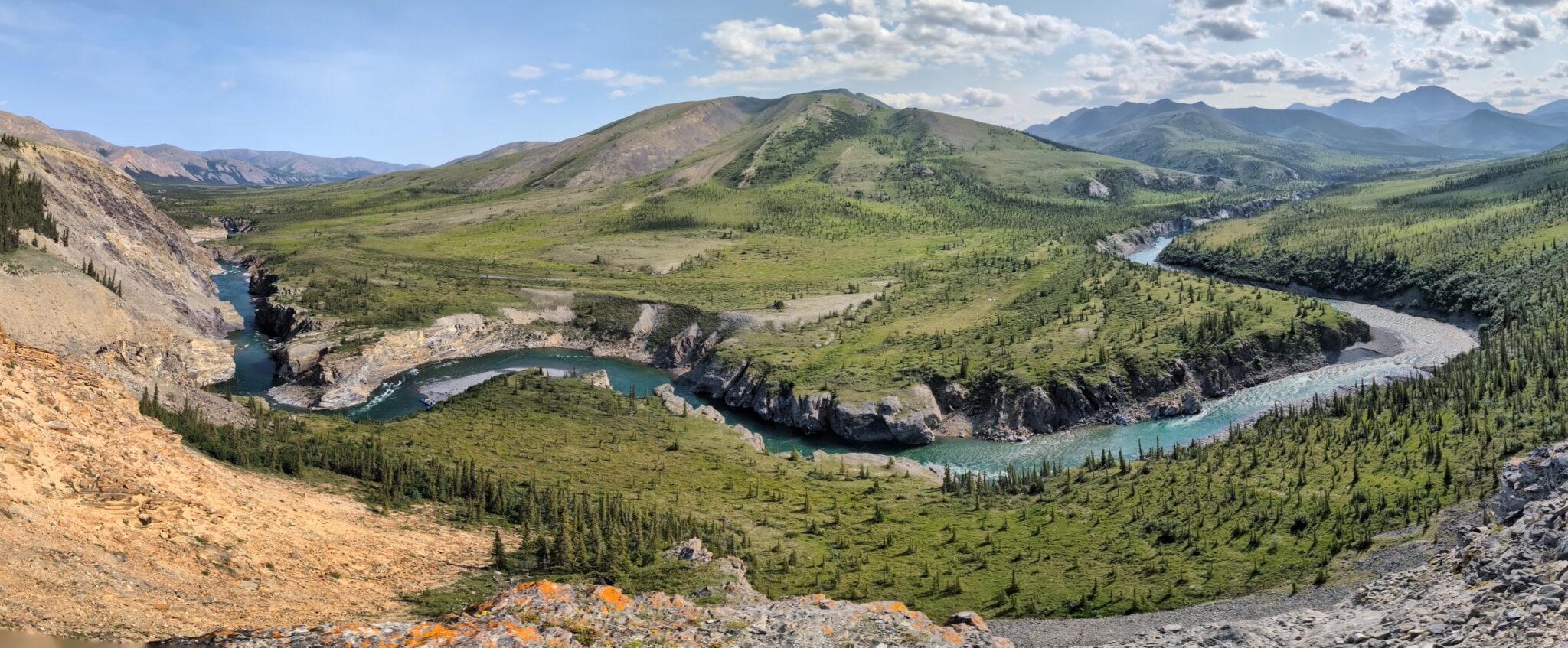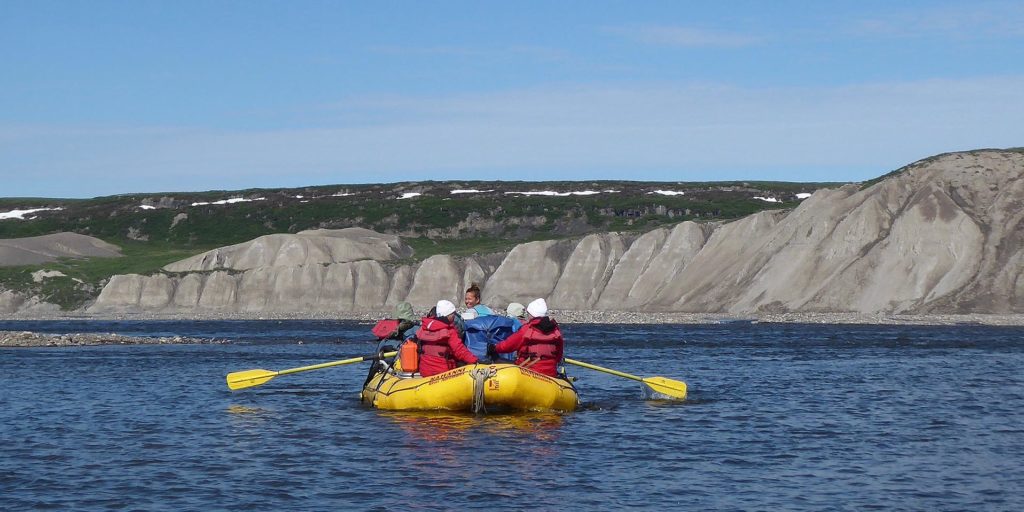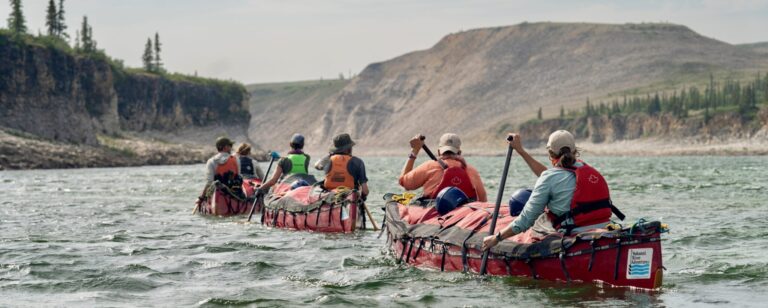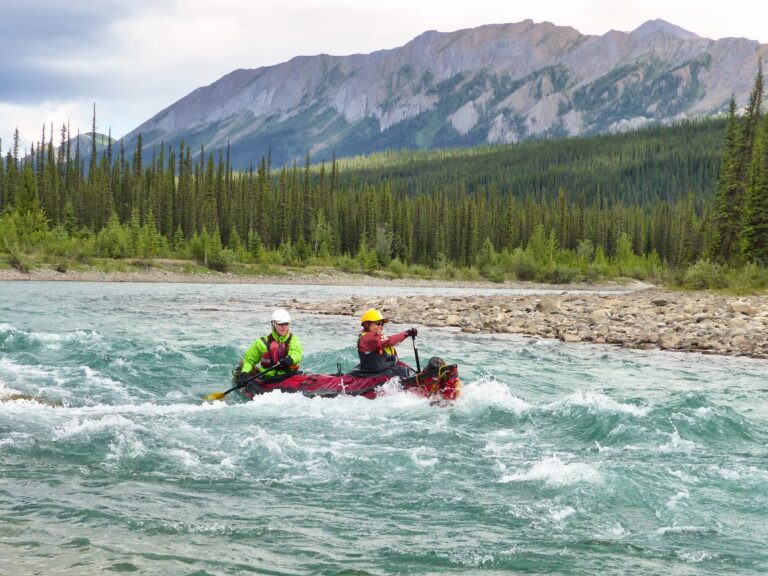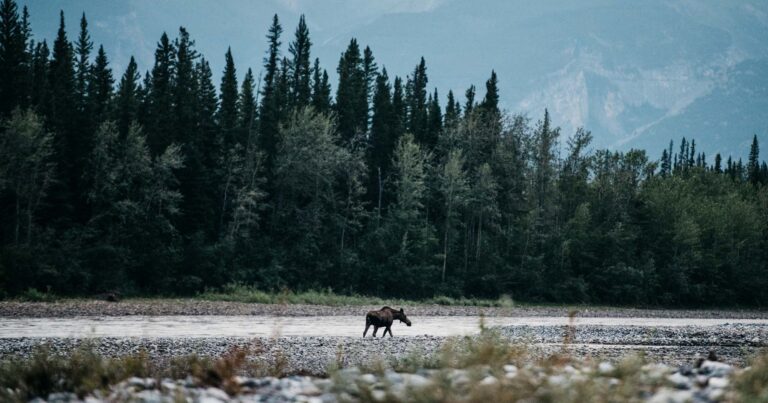Where in the world is the Firth River?
Issuing forth from the north-western corner of the Yukon, the Firth River embraces a spectacular natural region on the continent’s north slope and is the core of Ivvavik National Park.
Canada’s oldest river, it flows from the British Mountains on the Alaska/Yukon border northward to the Beaufort Sea, with half its length incised by a spectacular canyon!
Join us on this source to sea journey for an immersive expedition into the heart of the Arctic tundra!
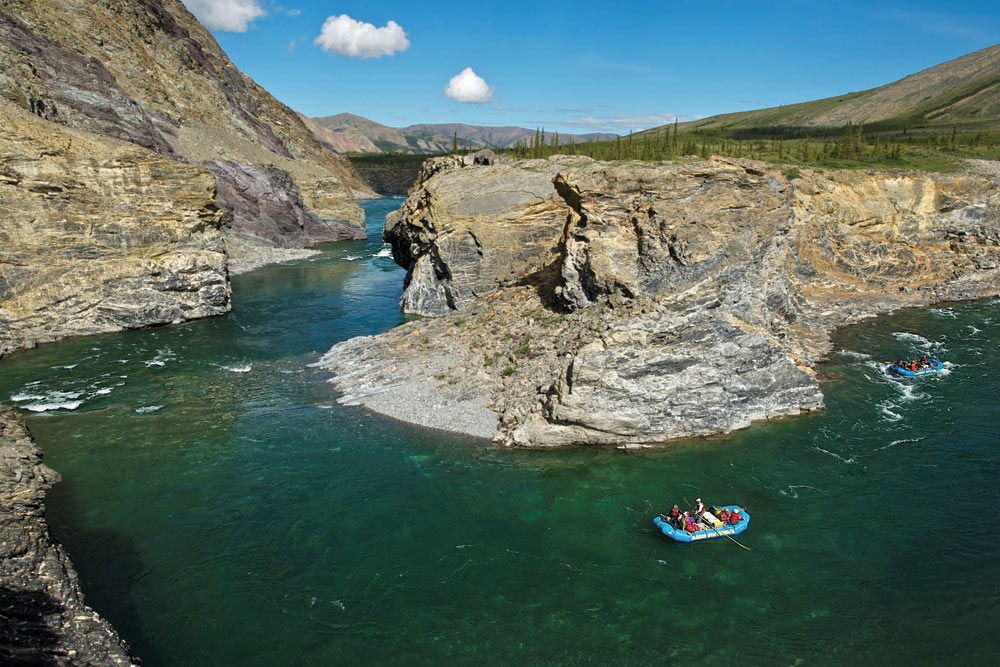
A Rich Culture
The Firth River flows through lands which the Inuvialuit people have hunted, fished and gathered on since time immemorial. The Firth is not only Canada’s oldest river geologically, but is also steeped in a rich culture and history to immerse yourself in.
A highlight of our trips is the opportunity visiting Engistiak, an early Inuvialuit site where bones and tools have been found dating back over 8 thousand years. Fossil remains of Pleistocene megafauna have been unearthed too, speaking to the timeless history of this land.
Ivvavik National Park: A Flagship of Arctic Biodiversity
Ivvavik National Park was renamed from Northern Yukon National Park in 1992 for the Inuvialuktun word meaning “nursery” or “birthplace”, referring to the importance of the area as the calving ground for the Porcupine Caribou.
The Firth River valley hosts a range of habitats, from tundra meadows to rich bench lands, rocky alpine ridges to lowland deltas and coastal lagoons.
A variety of iconic Arctic species call this valley home, whether year-round or in migration. Musk oxen, Dall’s sheep, grizzly bear, wolverine, wolf, gyrfalcons, rough-legged hawks, snow geese and tundra swans are just a few of the captivating creatures we are privileged to observe each year on our immersive river journeys.

Witness the Greatest Land Migration on the Planet
Arguably one of the most impressive species in this ecosystem is the barren-ground caribou, an emblem of winter stoicism and resilience.
The Firth River is graced each year by the phenomenon of the 250,000 strong Porucipine herd fording its waters in their annual migration.
Alighting from their southern wintering grounds in the sheltered boreal forests of north western Canada, the herd make their way to their summer breeding grounds on the Arctic coast.
Every year, a few of us are lucky enough to witness this breathtaking spectacle – the longest migration of any land mammal!
Floating down the Firth’s crystalline waters, we experience this drama unfold before our eyes and the intricate relationships among the Arctic’s species.
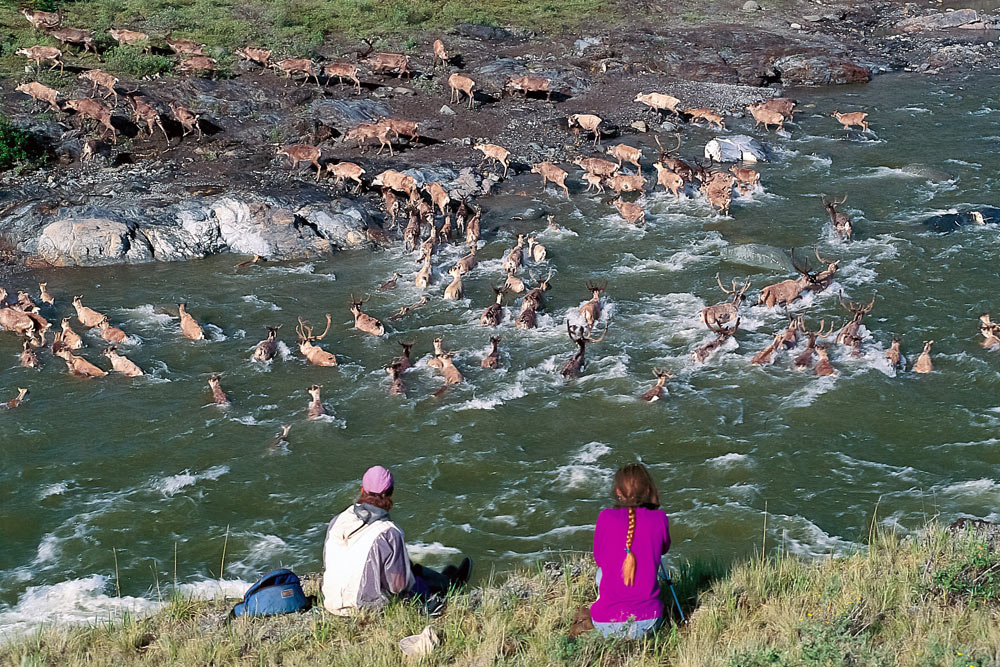
World Class Hiking
Our Firth River journeys offer spectacular opportunities to explore the tundra landscape on foot. Ivvavik National Park is a hiker’s dream, with boundless choices to discover the ancient and fascinating geology of the British mountains and gain fresh perspective on the land. High above the treeline, the alpine is accessible for all, from those who wish for a short foray into the alpine, to those who desire an all-day montane excursion.
Exquisite Wildflower Displays
The fast-paced Arctic summer means each week sees the arrival of new wildflower species. Each year, the surrounding alpine meadows are vibrant mosaics of cinquefoils, dandelions, lupines and Arctic poppies.
These colourful stages are home to a unique collection of insects – many of whom have mind blowing surivival strategies to survive the winter. Cuckoo bumblebees, mason bees, fritillaries and duskywing butterflies are just a few of the pollinators who grace these slopes to ensure the continued survival of the plant communities.

Breathtaking Aerial Views of the Tundra
The flight home offers a stunning panorama along the Arctic coastal plain and Beaufort Sea, highlighting the vastness of this rugged landscape through which we have just travelled.
Crossing the Mackenzie River Delta, an intricate maze of waterways and ponds, we have a rare opportunity to observe this unique ecosystem and the biodiversity it supports.
If we are lucky, we may even spot Beluga whales from the air!
Rafting the Firth: Something for Everyone
Rafting the Firth River is not just another river adventure, it is a unique opportunity to immerse yourself in some of the planet’s last true wilderness. Whether you are interested in hiking, geology, wildflowers or wildlife watching, this remote corner of Canada offers something for everyone.
For those interested in diving deeper into the history, ecology or geology of the Firth, we also offer specialist expeditions!
Each year we run a Rafting with Researchers Expedition in collaboration with Parks Canada. We are joined by two Parks Canada scientists and two Inuvialuit interpreters who give insight into the Firth from an Indigenous perspective. Guests are able to participate in scientific research, such as benthic surveys, water quality monitoring and raptor surveys.
We also regularly run an expedition in collaboration with Canadian Geographic. We are joined by an ambassador from the Royal Canadian Geographical Society who brings fresh insight in addition to our world class guide team.
See here for a closer look at our Canadian Geographic and Rafting with Researchers expeditions.
If you have questions about the Firth River or any of the other rivers which we offer, please don’t hesitate to reach out via email or phone. Our friendly Expedition Planning team would be delighted to discuss which Arctic River expedition would be the best fit for you!


